 Date: Tuesday, April 17, 2012 Date: Tuesday, April 17, 2012
Time: 7:00 PM
Admission: FREE
Presented by: the Hollow Earth Society, The Public School New York, and punctum books
The term “para-academic” captures the multivalent sense of something that fulfills and/or frustrates the academic from a position of intimate exteriority. Para-academia is that which is beside academia, a place whose logic encompasses many reasons and no reason at all (para-, “alongside, beyond, altered, contrary,” from Greek para-, “beside, near, from, against, contrary to,” cognate with Sanskrit para “beyond”).
The para is the domain of: shadow, paradigm, daemon, parasite, supplement, amateur, elite. The para-academic embodies an unofficial excess or extension of the academic that helps, threatens, supports, mocks (par-ody), perfects and/or calls it into question simply by existing next to it.
Following a series of classes organized through the Hollow Earth Society and The Public School New York on the subject of “Para-Academia and Theory Fiction,” this event brings together a group of editors whose work in publishing falls within the para-academic, in one sense or another.
Presenters will address the practice and theory of para-academic publishing, its relation to various areas of life (art, pedagogy, politics), and present some of their recent titles.
- Katherine Pickard & Miguel Abreu, Sequence Press
- Paul Boshears, continent
- Eileen A. Joy & Nicola Masciandaro, punctum books
- Sina Najafi, Cabinet Magazine
- Dan Remein, Whiskey & Fox, Pelt
- Valerie Vogrin, Sou’wester, Peanut Books
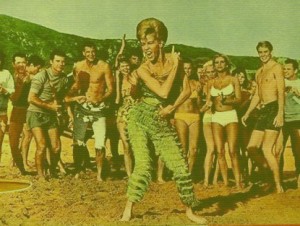 Put the superfun back in superfund! Put the superfun back in superfund!
Date: Friday, April 6
Time: 8:00–11:00 PM
Admission: $7
Presented by the Hollow Earth Society
The Gowanus is a neighborhood in flux—a place where past, present, and future are colliding—not to mention nature and industry, construction and decay… So join us at Observatory for a night of good, clean toxic fun in celebration of the Hollow Earth Society’s ongoing Pop-Up Museum! Featuring specialty “Gowanus Punch” drinks and henna tattoos for sale, free comestibles, video and sound art, and performances including burlesque, comedy, puppetry, and music.
Performers include:
- Lindy Lollipop, Burlesque Performer
- Gretta Vendetta, Burlesque Performer
- Eric Grundhauser, Comedian (Creator of DUNGEON MASTER and co-host of The Brain Fart Trivia Show)
- The Great Gouldini, Puppeteer
- Grace Baxter and Emi Brady, Henna Artists
Pop-Up Museum artists and facilitators include Stephen Aubrey, Grace Baxter, Emi Brady, Ted Enik, Ben Garthus, Ethan Gould, Wythe Marschall, Megan Murtha, Nandini Nessa, Rob Parker, Rob Peterson, Kathryn Pierce, Oberon Redman, Lindsey Reynolds, Nikki Romanello, Mike Rugnetta, Tim Schwartz, and Jon Waldo.
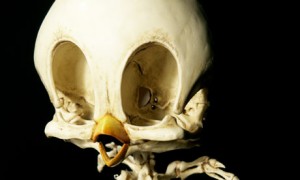 Tweety Bird skull: Copyright Hyungkoo Lee, all rights reserved. An illustrated lecture with Mark Dery
***IN MANHATTAN at The Cornelia Street Cafe
as part of the BODY AS FUNHOUSE MIRROR series***
Date: Sunday, April 29
Time: 6 PM
Admission: $10 (includes a drink!)
Presented by Hollow Earth Society and Ted Enik
Originally presented by Morbid Anatomy
Celebrating the publication of his essay collection, I Must Not Think Bad Thoughts: Drive-By Essays on American Dread, American Dreams, cultural critic and cult author Mark Dery will lecture—with unforgettable slides—on the hallucinatory Crypt of the Capuchin monks in Rome, the uncanny wax mannequins at La Specola in Florence, and the 19th-century Chinese artist Lam Qua’s paintings of patients with eye-poppingly bizarre tumors, which so fascinated Oliver Wendell Holmes Sr. that he wrote an article exhorting all “worshippers of morbid anatomy” to see the paintings, a textbook example of what Holmes called “the pathological sublime.”
Mark Dery is a cultural critic. He is best known for his writings on the politics of popular culture in books such as The Pyrotechnic Insanitarium: American Culture on the Brink, Escape Velocity: Cyberculture at the End of the Century, Flame Wars, and Culture Jamming. He has been a professor of journalism at New York University, a Chancellor’s Distinguished Fellow at the University of California, Irvine, and a visiting scholar at the American Academy in Rome. His latest book, I Must Not Think Bad Thoughts, is “a head-spinning intellectual ride through American dreams and American nightmares” and will be available at his Cornelia Street Observatory engagement. He is writing a biography of the artist Edward Gorey for Little, Brown. markdery.com
***
About the series:
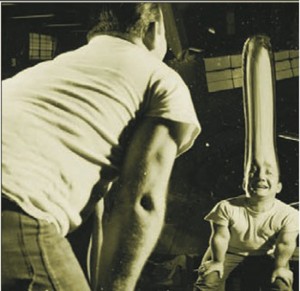 Cornelia Street Cafe and Observatory present a series of Observatory talks in the great borough of Manhattan: BODY AS FUNHOUSE MIRROR: Cultural Reflections On The Human Form. These talks will introduce Observatory to a new audience and give presenters the opportunity to update their work. Cornelia Street Cafe and Observatory present a series of Observatory talks in the great borough of Manhattan: BODY AS FUNHOUSE MIRROR: Cultural Reflections On The Human Form. These talks will introduce Observatory to a new audience and give presenters the opportunity to update their work.
Produced by Wythe Marschall and Ted Enik. Originally produced at Observatory by Morbid Anatomy Library’s Joanna Ebenstein. Thanks to our hosts, Cornelia Street Cafe, and our presenters: Amy Herzog, Sharon Shattuck, and Mark Dery.
 Facilitated by Lindsey Reynolds Facilitated by Lindsey Reynolds
Date: Monday, March 26
Time: 7:00 PM
Admission: $5 suggested donation
Presented by the Hollow Earth Society and Radio Transmission Ark
Bring any and all found objects of delicate size and shiny caliber to create homemade necklaces, bracelets, pins, and more. Scour your own neighborhood or the environs of Proteus Gowanus for metal and wooden scrap, anything shiny, and everything unexpected. Explore recombining parts in new ways.
This open workshop was inspired by the “Gowanus found object collection” currently on view in Observatory.
Part of The Pop-Up Museum of the Gowanus Canal >>
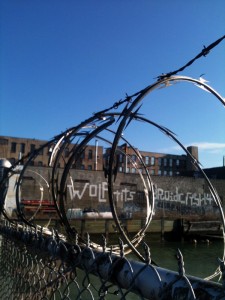 THE POP-UP MUSEUM THE POP-UP MUSEUM
of the Gowanus Canal
Curated by the Hollow Earth Society and Radio Transmission Ark
March 3 – April 22, 2012
Toxic Beach Blanket Pop-Up Party showcasing the evolved work of the Museum: 8:00 PM, Friday April, 6th.
See our inspirations on Tumblr >>
Say hello on Twitter >>
A museum’s mission involves the categorization, preservation, and contextualization of objects within a finite space. The Pop-Up Museum is designed to function as the inverse of these practices, bringing together a set of local, “unremarkable” objects that then become art or serve as a springboard for art that references them.
Through the playful contextualization and re-contextualization of these objects, we will redefine the museum—both what a museum looks like, physically, and what it does, culturally.
Specifically, we will work with found materials from all around the Gowanus neighborhood to create a new “history” of the region and its traditions (a not entirely serious one).
As a collective, we will plow through a century of objects in order to remix in miniature the Gowanus, Observatory, and the whole enterprise of the museum—the whole enterprise of producing, categorizing, and showing off knowledge. Quick, fast, and dirty, the Pop-Up Museum presents the unpresentable: change itself.
The “art on the walls” for this show will thus consist of:
- input – gathering of information, data, narratives, knowledges, magics, magnetisms, and (overlooked) curiosities from the physical space around Observatory
- process – generation of media, drawings, recordings, photos, video, writing, and data analyses
- output – a series of mixed-media art-objects, a book, a series of records, miniDV tapes, presentations, workshops, sound walks, magical fieldtrips, historical jaunts
All of these, not one of these, will become the art of the Pop-Up Museum…
Facilitators
- Ethan Gould
- Wythe Marschall
- Rob Peterson
- Lindsey Reynolds
Artists
- Stephen Aubrey
- Grace Baxter
- Emi Brady
- Ted Enik
- Ben Garthus
- Nandini Nessa
- Megan Murtha
- Rob Parker
- Kathryn Pierce
- Oberon Redman
- Nikki Romanello
- Mike Rugnetta
- Tim Schwartz
- Jon Waldo
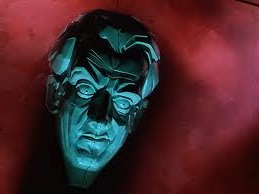 Or, How I Made a Misguided Kids-Flick and Poked Fun at the Fear of the BOMB Or, How I Made a Misguided Kids-Flick and Poked Fun at the Fear of the BOMB
A multimedia examination of The 5,000 Fingers of Dr. T.—the only live-action film Dr. Seuss had a firsthand hand-in—with kid’s book artist/author Ted Enik
Date: Thursday, March 8
Time: 8:00 PM
Admission: $5
Presented by the Hollow Earth Society
There are a few choice examples of pop cultural relics that reach such squirmingly exquisite depths that they—like the shaggy-dog “dig through the core of the planet to China”—improbably invert their critical standing and ascend to an unstable pinnacle of flashing-popping brilliance.
With its stream-of-consciousness plot, Escher and Dalí-influenced sets, and hands-down freaky musical numbers, Dr. Seuss’s The 5,000 Fingers of Dr. T. is the champeen.
Ted Geisel was inspired to write this (no other term for it) revenge fantasy by recalling the piano lessons he’d endured as a boy “from a man who rapped my knuckles with a pencil whenever I made a mistake… I made up my mind I would get even with that man.” Enter the foppish and maniacal Dr. Terwilliker, an authoritarian piano teacher who seduces willing moms to entrust their sons to him, imprisons them in his barb-wired “Institute,” then forces the boys to play his Seussian, snake-shaped piano—his “5,000 Fingers.”
As a dreamscape-essay on adolescent angst, Dr. T. is unsparingly incisive, foaming with Oedipal weirdness and dysfunctional gender-bending. The film is virtually pounding “Chopsticks” with subterranean, assbackwards sexual energy. As a “laugh till you get it” metaphor for Eisenhower’s America, the film mines the public’s hot-and-getting-hotter anxieties about a second Hitler, an aggressive Russia, and the omnipresent Bomb. It sneakily tickles the ivories with a Stravinsky-like darkness.
Miles from being an “innocent” fantasy romp, The 5,000 Fingers of Dr. T. is a Cubist gene-splice of Never Never Land and internment camp. Tonight—employing stills and clips from the film, reviews, analysis, and primary colors—we’ll tour both terrifying alternate realities.
Ted Enik—of “Cutegsam!,” “Parallel Botany,” “Wonderland’s Cutest Couple,” and “Where’s Ahab?“—does a few credible impersonations: Hannibal Lecter, Tom Waits (singing), and the extraordinary Hans Conried—the actor who plays the fantasy-fascist Dr. Terwilliker (Dr. T). If you ask nicely, and the wine has been flowing amply, he might be persuaded to embarrass himself. Ted is a caramel-centered member of the Hollow Earth Society. You can find out more about his kid’s book work at tedenik.com.
With comments piquant and assessment Tabasco
Ted Enik will autopsy Seuss’s fiasco.
Its celluloid entrails—content and style—
Our boy will compare n contrast, all the while
Pointing out its extreme and assorted humdingers.
He’ll deconstruct Dr. T.’s 5,000 Fingers!
 A Short Film Screening with Filmmaker and Ecologist Sharon Shattuck A Short Film Screening with Filmmaker and Ecologist Sharon Shattuck
***IN MANHATTAN at The Cornelia Street Cafe
as part of the BODY AS FUNHOUSE MIRROR series***
Date: Sunday, February 26
Time: 6 PM
Admission: $10 (includes a drink!)
Presented by Hollow Earth Society and Ted Enik
Originally presented by Morbid Anatomy
Parasites challenges the notions of body, friend, inside, and out. The word “parasite” comes with loads of vile connotations, but in nature, nothing is purely good or evil. In the 27-minute experimental documentary Parasites: A User’s Guide, Shattuck embarks on a journey to decode some of the most misunderstood creatures on earth. The dramatic rise in autoimmune diseases, asthma, and allergies since the turn of the last century has confounded scientists, but some researchers think they have uncovered the key to controlling the skyrocketing rates: tiny parasitic worms called helminths… Through the seeming oxymoron of the “helpful parasite,” Sharon questions the nature of our relationship with parasites—and suggests a new paradigm for the future.
The screening will be followed by a Q&A with director Shattuck and some friends: Radiolab’s Pat Walters, Scientific American’s Ferris Jabr, helminth researcher Dr. P’ng Loke, and two real life “users” of helminthic therapy. Please join us for the event, and if there are more questions for the panel than the performance can accommodate, we’ll move upstairs to the cafe afterwards!
Parasites: A User’s Guide (long trailer) >>
Sharon Shattuck is a producer/director/animator with Sweet Fern Productions, the production company she founded. Her previous experience includes work with the Smithsonian Institute, the Field Museum, NPR’s On the Media, and internships with WNYC’s Radiolab, and the BBC World Service/Stakeholder Forum. She has an undergraduate degree in forest ecology and a graduate degree in documentary and broadcast journalism. Her first film, the short Parasites: A User’s Guide (2010), was an official selection of the Traverse City Film Festival, the Camden International Film Festival, the Michigan Film Festival, and the International Science Film Festival. In addition to her work with Sweet Fern, she is a member of the creative team at Wicked Delicate Films.
Parasites: A User’s Guide was presented at Observatory in Brooklyn by Morbid Anatomy in 2010.
***
About the series:
 Cornelia Street Cafe and Observatory present a series of Observatory talks in the great borough of Manhattan: BODY AS FUNHOUSE MIRROR: Cultural Reflections On The Human Form. These talks will introduce Observatory to a new audience and give presenters the opportunity to update their work. Cornelia Street Cafe and Observatory present a series of Observatory talks in the great borough of Manhattan: BODY AS FUNHOUSE MIRROR: Cultural Reflections On The Human Form. These talks will introduce Observatory to a new audience and give presenters the opportunity to update their work.
Produced by Wythe Marschall and Ted Enik. Originally produced at Observatory by Morbid Anatomy Library’s Joanna Ebenstein. Thanks to our hosts, Cornelia Street Cafe, and our presenters: Amy Herzog, Sharon Shattuck, and Mark Dery.
 New theatrical works by Ariel Stess & Claire Moodey New theatrical works by Ariel Stess & Claire Moodey
Date: Thursday, February 9
Time: 8:00 PM
Admission: $5
Presented by the Hollow Earth Society
The Hollow Earth Society is proud to host two new multimedia explorations of our intimate relationships with objects and ideas:
Spectral Findings, a theater concert, reanimates Goethe’s scientific findings on light and colours through Faust and “Die Erlkonig.” This experiment in chamber performance is a passionate and poetic narrative essay in which colored shadows and chromatic aberrations leave gentle souls prey to the work of devil. How do we see and what? In seeing, we fall. In falling we are transformed; visions shift. Mingling the intimate chamber music of Franz Schubert, scientific puppetry, and romantic devilry, one is left to wonder if seeing is believing, can we choose what to see? Constructed by Claire Moodey in collaboration with Jonah Rosenberg, Maxwell Cramer, and Abigail Lloyd.
Larger Objects by Ariel Stess charts the non-journey of two dutiful gentlemen. As they reflect on the objects of their affection, they find themselves intertwined through painful positions, misshapen dreams, and shifting memories. There is a woman too, somewhere, and she may need their help. The past, present, and impossible collide in this twisted, tedium. And something has been broken… ribs… twigs… More?
 LARGER OBJECTS CAST: LARGER OBJECTS CAST:
Ariel Stess is an Astoria-based playwright, performer, and director from Santa Fe, NM. She holds a BA from Bard College; MFA in Playwriting from Brooklyn College. Recent and upcoming plays: The Only Girl in the Hot Tub (Geraldine Page Salon, dir. Barbara Harrison), He Ate Quietly into the Wall (Foxy Films, Oct. 2011; Geraldine Page Salon, Sept. 2012), Highlights in Hollywood (East 13th St. Theatre, dir. Sarah Rasmussen), The Lock and Door (Dixon Place, Jan. 2010; Bushwick Starr, April 2012), Prowlers in the Night (Bard College, dir. May Adrales), and The Waiter (Bard College).
Sam Stonefield holds a BA from Bard College where he received the Ana Itelman Award for Directing. He directed Farmyard (Kroetz), Cowboy Mouth (Sam Shepard & Patti Smith), and makes performance installations. He has worked with Theodora Skipitares (Trojan Women), JoAnne Akalaitis (Bacchae; Jump) and Daniel Fish (KFC). Recently, he fabricated Daniel Arsham’s decor for MCDC’s final “Event” at the Park Avenue Armory. He’s currently the Assistant Director on Eric Schorr’s Tokio Confidential at Atlantic Stage, dir. Johanna Mckeon. samuelstonefield@gmail.com
Maxwell Cosmo Cramer is a Brooklyn-based stage artist and co-founder of the performance group EGG. As director: Touching Theater Feelings (WAXworks/Triskelion) I’m Miserable But Change Scares Me (Dixon Place). As producer: Voice and Vision Theater 2011 ENVISION Retreat & Lab (Bard College/The Women’s Project). As performer (upcoming): Mother, Goose, and Grimm (Little Theater at Dixon Place), Boy Show (14th St. Y), Gray Notebook (Bushwick Starr/Target Margin Lab). Past work: (NOLA Fringe), Relative Value (3LD), A Week at the NJ Shore (Dixon Place & touring), Tydrus the Twit (The Tank), Hamlet (Full of Noises), HIM (walkerspace). superword.tumblr.com
Nic Grelli – Regional: Honey Brown Eyes (SF Playhouse-West Coast Premiere, Theatre Bay Area Editors’s Pick), Superior Donuts (Dorset Theatre Festival). NYC: School Night (Ensemble Studio Theatre Marathon), The Un-Marrying Project (Purple Rep), Saturn Nights (Incubator), Ampersand (NYC Fringe). Upcoming: Magic Trick (Culture Project-Reading), Animals Commit Suicide (Teranova Collective-Workshop). Short films: “Filthy Gorgeous” and “Adopting Skins.” Nic has worked extensively with Labyrinth Theatre Company and is proud to be a producer, camera man, and creative contributor to the webseries Jeesus Freaks. Check it out at www.makelovejackson.com. Training: NYU/Tisch and Maggie Flanigan. Proud member of AEA.
SPECTRAL FINDINGS CAST:
Claire Moodey is a Brooklyn, NY based theater artist interested in exploring the power of metaphor, narrative, and dream-like association to synthesize information about ourselves and the world. Recent credits include a radio play silent movie, exploring the mapping of consciousness at Theater for the New City’s Dream Up Festival and the NOLA Fringe (creater, director), Whatever Happened to Baby Jane at the HOWL Festival (lighting and video design), and John Kelly’s The Escape Artist at P.S. 122 (video performance, PA). On February 13th, her short play Mother, Goose, and Grimm will be presented at Dixon Place as part of Little Theater.
Jonah Rosenberg, musical direction/piano, is a Brooklyn, NY based pianist, composer and sound designer striving to construct intuitive music. Jonah studied classical guitar and jazz piano at SUNY Stony Brook. Jonah has composed music for modern chamber ensembles, electro-acoustic ensembles, multi-media theater works, jazz groups, rock and hip hop. Jonah has performed, led and composed for groups with Blaise Siwula, Ray Anderson, Kevin Shea, Martin Loyato, Janie Cowan, (saxophonist) Marcus Miller, Lisa Dowling, Aleks Karjaka and others. He is a third of the musical collaboration Lions For No Reason, the Managing Director at Outpost Artists Resources and curator of the Vectors: Contemporary Music Series.
Abigail Lloyd, set and costume design, lives in Brooklyn and loves building sets for theater. She also builds furniture and other objects from steel. When she’s tired, she makes digital prints with Photoshop and draws cartoons. Abigail is interested in slow processes, intimacy and collaboration. Please surf www.abigaillloyd.com for more.
Maxwell Cosmo Cramer, dramaturgy,
 An illustrated lecture by artist Alastair Noble on the ancient civilizations of darkest Peru An illustrated lecture by artist Alastair Noble on the ancient civilizations of darkest Peru
including Llhuros and the stone engravers of Ica
Date: Friday, February 10
Time: 8:00 PM
Admission: $5
Presented by the Hollow Earth Society
Recent evidence has emerged from archaeological sites around Lake Titicaca Peru that Llhuros—thought to be a fictional civilization contrived by artist Norman Daly—actually existed and thrived in this region centuries ago. Likewise, the ancient engraved stones of Ica Peru reveal a civilization that lived concurrently with dinosaurs and were knowledgeable in sophisticated medical practices long before western discoveries, according to researcher Dr Javier Cabrera.
Alastair R. Noble is an environmental/installation artist and printmaker, his cross-disciplinary practice engages in contemporary cultural issues. Although originally from the UK, he has lived and work in New York City for over 30 years and has exhibited extensively both nationally and internationally, including in Peru, Chile, Bulgaria, UK. His practice is a response to architecture and the natural environment and investigates particular sites in the context of literature, poetry or philosophical texts by authors such as Mallarmé, Marinetti, Mayakovsky, Wittgenstein. The Library of Babel and On the Exactitude of Science by Jorge Luis Borges have been the subjects of his recent projects, which he transposed into labyrinthine maps of the mind and landscape. Additionally he writes on sculpture and architecture for Sculpture magazine and journals. He has taught and lectured at numerous colleges and universities.
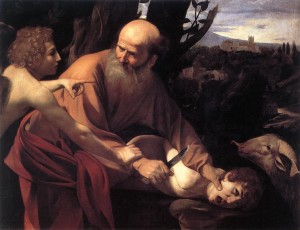 A class facilitated by Jonathan Basile A class facilitated by Jonathan Basile
Date: Tuesday, January 17
Time: 8 PM
Admission: free
Presented by The Hollow Earth Society and The Public School New York
Note: everyone is welcome, whether or not you attended the first session of “A Crossing Without Borders.”
What is death? How does our being mortal shape the possibilities of our cognition and our desire? How should we live in order to come to terms with the term of life, and how does our orientation towards a good death become an art of living?
How does the history of thinking about death shape our understanding of these possibilities, and how do the cultural and other differences surrounding the treatment of death play a part in constituting those very differences—the demarcations of ethnicities, nations, religions, genders, etc.—all the lines drawn on this side of the division between life and death? What does thinking about death in general reveal to us about death in our culture—about our medical industry, about our political furor over “death panels,” about a culture industry obsessed with the equation of youth and beauty, for example?
We will discuss these themes as they are developed in two of Derrida’s major works on death: The Gift of Death and Aporias. In all of our thinking about life in this world, about responsibility, authenticity, temporality, finitude, or mortality, for example, it seems that we always surreptitiously introduce some infinite beyond into the constitution of the here-below, a transcendence that may be utterly unknowable despite our complete reliance
on it.
It has gone by many names throughout history: the Form of the Good, God, the unnameable possibility of the name, the Unconditioned, the Inverted World, Being, Differance, or the secret; we will consider what it would mean to nickname it “Death.”
Reading Assignment:
Aporias – Chapter 1
Recommended Additional Reading:
Aporias – Chapter 2
Jonathan Basile is a volunteer with the Visiting Nurse Service of New York, visiting hospice patients and their families. He currently studies at Brooklyn College, working towards an MFA in Creative Writing. This past summer he organized a series of discussions on death in Western philosophy through The Public School New York, focusing on the work of Plato, Hegel, Heidegger, Levinas, and Derrida.
Writing Assignment
Most every representation of death throughout Western thought has sought to offer a vision of death that could be incorporated into one’s sense of responsibility in this life, into one’s sense of being a free agent, accountable for one’s own decisions and their consequences up to death and beyond. Such representations present certain paradoxes for human beings laboring under them, not the least of which would be the attempt to bring death under our control as something we could actively will and take responsibility for, despite it’s seeming to always take us by surprise, unawares.
For example, the Christian representation of death as a final judgment and afterlife as an infinite reward or punishment for actions in this life attempts to make sense of the infinite responsibility the Christian adherent feels as a result of her original sin, and offers a death that is a complement to the life of sacrifice she should lead (storing up her treasures in heaven, knowing all the while that a Father who sees in secret will reward her).
Try to write your own representation of death or the afterlife. Keep in mind what sort of an idea of life or the individual human your particular representation is reinforcing.
(Bonus points to anyone who offers a vision of death or the afterlife that undoes the patriarchal bias of the Platonic and Judeo-Christian representations. This tendency is best exemplified by Abraham’s sacrifice of Isaac—in order to prove his adherence to his absolute duty towards God, Abraham must renounce everything he holds dear in this world, to show that he is completely dedicated to its beyond. To make this infinite renunciation requires proving his willingness to kill his own son, without saying a word about it to his wife. It seems that the vision of individuality that one receives from this tradition of thinking about death is uniquely masculine or patriarchal.)
***
The Para-Academia Series
Ongoing workshops co-produced by the Public School New York and the Hollow Earth Society
A Shadow Genealogy of the Ivory Tower/Producing the Unwriteable
Manifesto:
The para is the “alongside,” that which comments on the official or normative. While academics debate the finer points of Shakespeare and Kant, para-academics aggregate around shadow-commentators whose works do not so much categorize (striate) and enlighten (bring light into) difficult terrain, but produce that terrain, creating obscure spaces and nebulous discourses that are immune to traditional academic approaches.
Blogs, speculative medievalisms, Cyclonopedia, Charles Fort, teratology, Deleuzean-everything, print-on-demand—these and other tentacles of a polycephalic (many-headed) para-academia have entwined to produce an addendum and, finally, an ultimatum to established disciplines and practices.
The Public School New York and the Hollow Earth Society will explore these emerging ideas and modes of expression through a series of discussions and writing workshops, with audio available after each session.
|
 Date: Tuesday, April 17, 2012
Date: Tuesday, April 17, 2012 Put the superfun back in superfund!
Put the superfun back in superfund!
 Cornelia Street Cafe and Observatory present a series of Observatory talks in the great borough of Manhattan: BODY AS FUNHOUSE MIRROR: Cultural Reflections On The Human Form. These talks will introduce Observatory to a new audience and give presenters the opportunity to update their work.
Cornelia Street Cafe and Observatory present a series of Observatory talks in the great borough of Manhattan: BODY AS FUNHOUSE MIRROR: Cultural Reflections On The Human Form. These talks will introduce Observatory to a new audience and give presenters the opportunity to update their work. Facilitated by Lindsey Reynolds
Facilitated by Lindsey Reynolds THE POP-UP MUSEUM
THE POP-UP MUSEUM Or, How I Made a Misguided Kids-Flick and Poked Fun at the Fear of the BOMB
Or, How I Made a Misguided Kids-Flick and Poked Fun at the Fear of the BOMB A Short Film Screening with Filmmaker and Ecologist Sharon Shattuck
A Short Film Screening with Filmmaker and Ecologist Sharon Shattuck New theatrical works by Ariel Stess & Claire Moodey
New theatrical works by Ariel Stess & Claire Moodey LARGER OBJECTS CAST:
LARGER OBJECTS CAST: An illustrated lecture by artist Alastair Noble on the ancient civilizations of darkest Peru
An illustrated lecture by artist Alastair Noble on the ancient civilizations of darkest Peru A class facilitated by Jonathan Basile
A class facilitated by Jonathan Basile